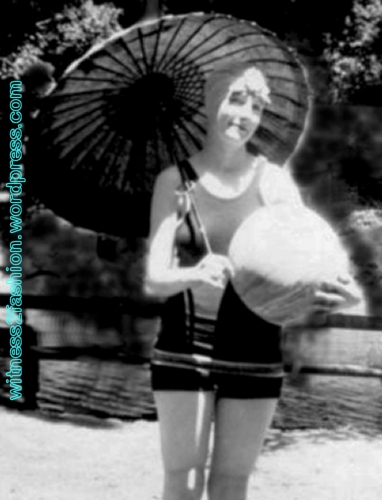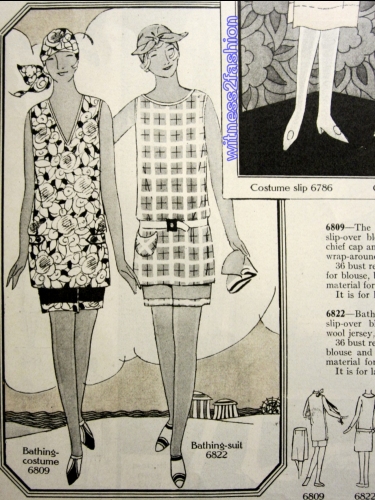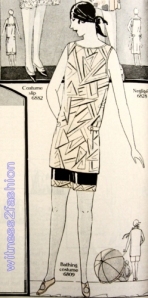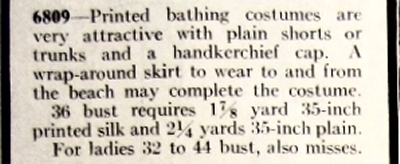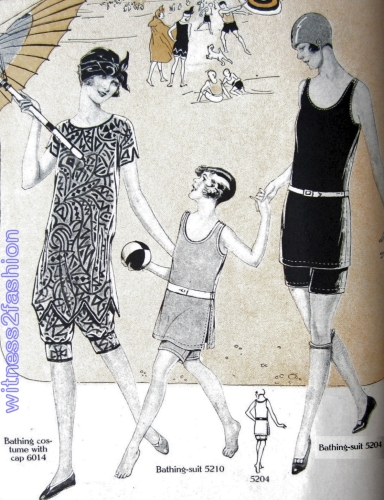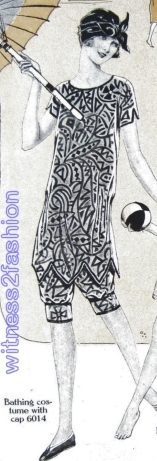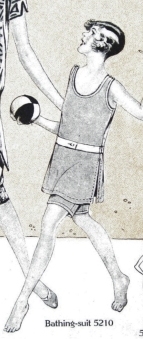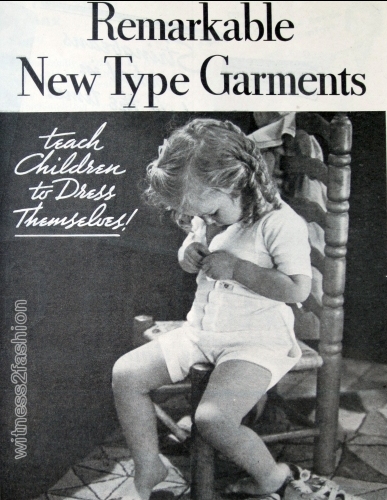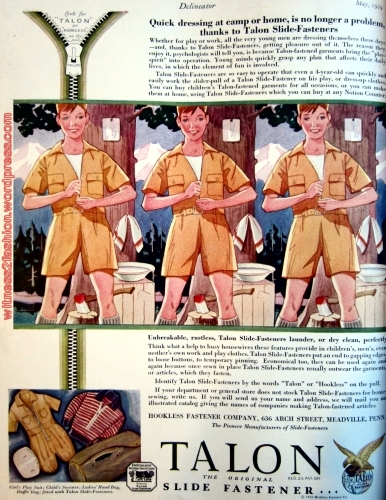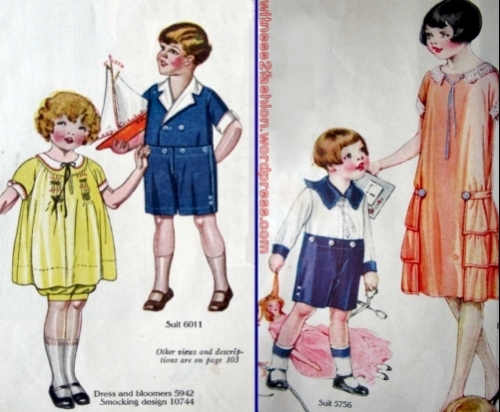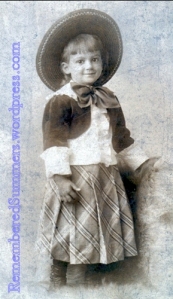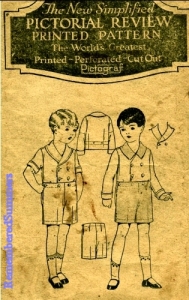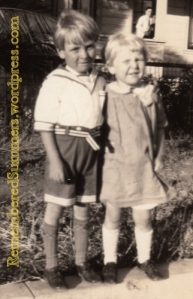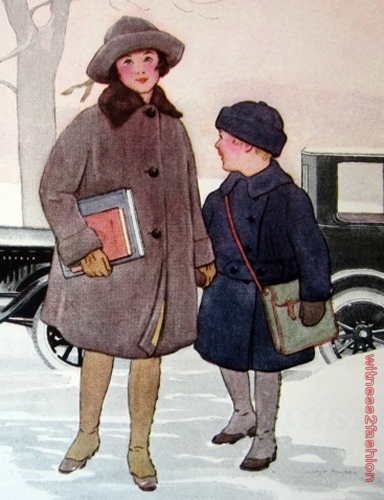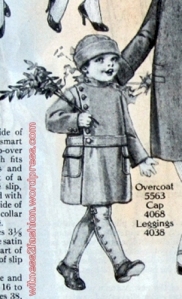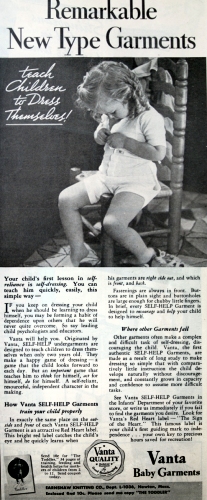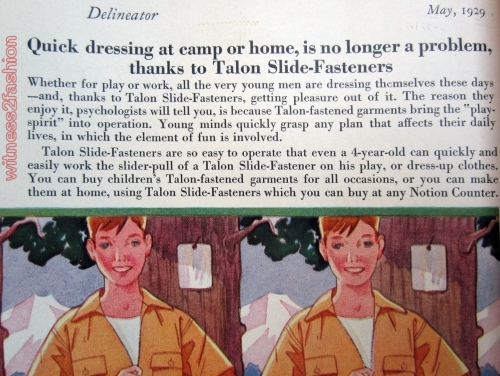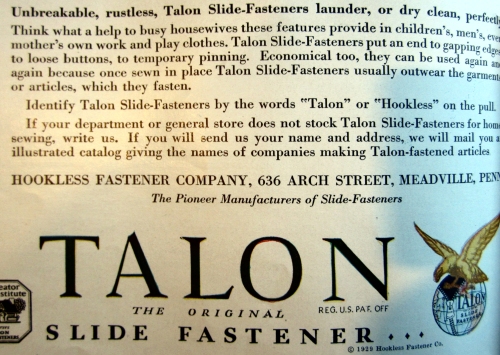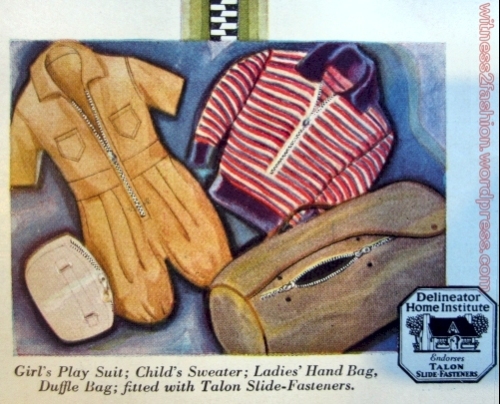I intended to make this a short post about two bathing costumes from 1926, but then I worked backward to some swim suits from 1925….
Two Bathing Suit Patterns from 1926
Although knit bathing suits were already popular, these two patterns for the summer of 1926 use printed textiles, with separate fabric or knit shorts or trunks.
The pattern for #6809 includes a wrap skirt, pictured above right. #6822 calls for a blouse of printed silk crêpe, which would have been very revealing when wet. Perhaps it was intended more for sunning than swimming, since it was available up to bust measurement 48 inches, and came in children’s sizes, too. Pattern #6809 was also illustrated in a very Art Deco print version (see below.) 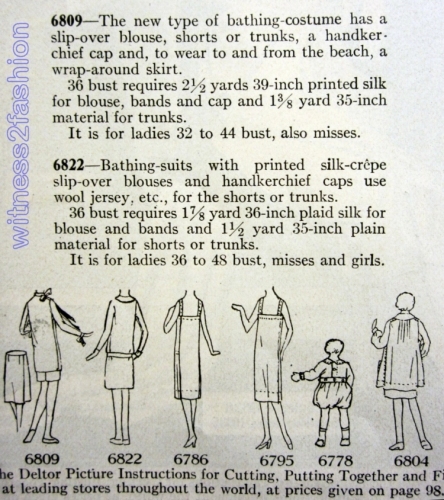
Art Deco Swim Suit , 1926
The striking Art Deco fabric illustrated here is also used to trim the trunks, which seem to be made of satin. Her bathing shoes appear to close with snaps, and are probably made of rubber. These illustrations are from Butterick’s magazine The Delineator; pattern #6809 was illustrated two months in a row. (Click image to enlarge.)
Three Swimsuits from 1925
The pattern on the left, # 6014, looks very old-fashioned next to the two knit suits on the right. The two 1926 bathing suits discussed above are clearly descended from this style, but in one year have become much shorter, simpler, and sleeveless. The little girl’s one piece wool knit suit, #5210, is as un-fussy as the adult’s bathing-suit on the right, #5204. With hindsight, we know that this is the style that would dominate for the next few years.
6014 “Printed surf silks, printed surf satin, foulard or chintz with plain to match; plain surf satin, plain surf filk or taffeta with contrasting are used for this new two-piece bathing costume with its attractive handkerchief cap. Or use wool jersey, or any of these materials plain, without the tucks at the side, and with a belt…. The bathing costume is becoming to ladies 33 to 48 bust; also misses.”
This description mentions fabrics I had never heard of: ‘surf silk’ and ‘surf satin.’ Wet silk would have been very clingy, but 1920s brassieres (flattening, not uplifting) were sometimes advertised as suitable for wearing under bathing costumes. Taffeta, wool, and sturdy cottons had been used in the dress-like bathing costumes of the early 1900s. This costume was also available in sizes up to 48″ bust, so it was expected to appeal to older, larger, and/or more conservative women.
5210 Another bathing-suit that plans to give the ocean hard wear this Summer is for the younger feminine members of the family. This practical suit buttons on the shoulders and has attached tights. The suit is both new and smart and should be made of heavy wool jersey. Parents will appreciate the fact that it puts wool next to the youngster’s skin. A simple suit of this type can be very easily made…. The bathing-suit is practical for girls and little girls 2 to 14 years.
This suit is a miniature version of # 5204, with its buttoned shoulders and attached tights. “Parents will appreciate the fact that it puts wool next to the youngster’s skin;” woolen underwear, like Jaeger’s, was part of the 1880s dress reform movement. (Having worn wool-lycra bathing suits myself in the 1950s and 60s, I think that sending a small child into the ocean wearing “heavy wool jersey” was insane. If you have ever hand-washed a wool cardigan, you know how absorbent and heavy wet wool can be.)
5204 Ready for an active life on the ocean wave is a simple, straight bathing-suit that has nothing in its make-up that might impede or hamper the swimmer. This very good-looking and practical suit is in one piece and the tights are attached. It can be made very easily, and the materials suitable for this style are heavy wool jersey and heavy jersey tubing. It buttons on the shoulders. The bathing-suit is good style for ladies 33 to 44 bust, also misses.
One-piece knit wool suits, without the (modesty) skirt, had been pioneered by Annette Kellerman, “the Diving Venus,” “the Million-Dollar Mermaid,” who was arrested for wearing one in 1907, and were used in competitive swimming in the 1920s. Imagine the water-resistance those Olympic swimmers had to overcome!
Notice that the woman in this illustration is wearing a rubber swimming cap – and rolled stockings!
A 1920s Bathing Beauty
If anyone doubts the influence of fashion illustrations, here is a family photo of a young woman wearing a purchased wool knit bathing suit, accessorized with a parasol and a handkerchief cap. If you look closely just above her knees, you can see that she has recently removed her rolled stockings.